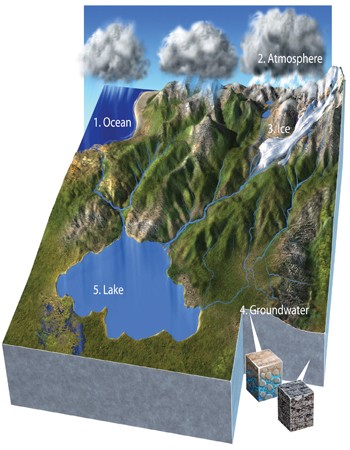The San Andreas fault has shifted rocks hundreds of kilometers. For example, plutonic rocks on the Pacific Ocean (western)side of the fault have been displaced from southern
California to northern California, relative to rocks on the North American (eastern) side. The San Andreas fault is classified as a
A) normal dip-slip fault.
B) reverse dip-slip fault.
C) right-lateral strike-slip fault.
D) left-lateral strike-slip fault.
Answer: C
You might also like to view...
The red stripes of a flag will look black when illuminated with
A. red light. B. cyan light. C. yellow light. D. magenta light.
The driving force of our planet's hydrologic cycle comes from
A. wind. B. the balance between precipitation and evaporation. C. solar energy. D. precipitation of water over the oceans.
Which of these numbered features contains the least amount of Earth's water?
A. 1-ocean B. 2-atmosphere C. 3-glaciers and ice sheet D. 4-groundwater E. 5-lakes
What two regions have had massive success in reducing their famines in recent decades?
A) Asia and Latin America B) Australia and North America C) Europe and the Middle East D) north Africa and sub-Saharan Africa E) Russia and the Near Abroad (former Soviet Union)